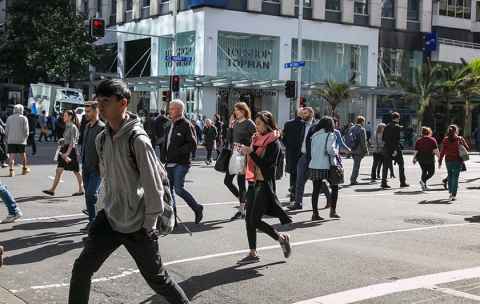The New Zealand Chinese are invisible in draft history consultation
27 May 2021
Opinion: Emeritus professor and historian Manying Ip says the draft history curriculum consultation risks failing to explore the stories of New Zealanders who do not identify as Māori or Pakeha.

The news that New Zealand schools would receive a revised history curriculum was welcomed by many. I was elated, both as an historian and someone who has worked closely with high schools and the education sector.
The aim of history teaching should be the empowerment of learners to think critically of the past so that they are well-equipped to understand the present and able to deal with the complexities of the future. History is an interpretation of past events in as comprehensive and unbiased way as possible. Sound history needs to have accuracy and integrity.
In its present form the History Curriculum consultation document from the Ministry of Education falls short of this standard. While understanding that this is a document meant as “a framework setting directions” and not a prescription giving specific details of topics, I found several aspects of the draft curriculum proposal deeply worrying, not least the invisibility of the story of the Chinese in Aotearoa New Zealand.
Binary frame
Quite rightly, Te Tiriti O Waitangi as a founding document legitimising the relationship “between the Māori and the Crown” is central. But there is no mention of tauiwi, the many communities who call Aotearoa home who arrived here as migrants and refugees but do not identify as Māori nor Pakeha.
A new history curriculum should offer an opportunity for schools to understand the breadth of histories of New Zealand. I write from the experience of researching and writing New Zealand Chinese history.
The Chinese have been in New Zealand for close to 180 years and have never been part of the binary frame of colonisers and the colonised. They were itinerant workers brought to the Otago goldfields and subjected to a series of anti-Chinese laws from 1881 onwards.
Were they represented by the Crown? Since the Chinese were prevented from applying for naturalisation from 1908 onwards, they could never be British subjects. Neither Pakeha nor Māori, the Chinese are still labelled “Others”.
From the 1860s till the 1950s, the Chinese endured forced family separation in the interest of White New Zealand.
For too long the Chinese were relegated to the fringe of society. They had no say in the nation’s policies and could not even expect the most basic of rights, e.g. miners’ accident benefit, family reunion, or medical welfare. They were the only ethnic group to pay a £100 poll tax for entry and had to be thumb-printed on both entry and exit.
Many of the arbitrary policies targeting Chinese were applied to local-born Chinese, cementing that this was about race not nationality. The Chinese story (aka Asian story) is a New Zealand story. Governor George Grey favoured New Zealand’s development as a ‘Better Britain of the South Pacific”.
Successive New Zealand governments continued to build a White Nation. Chinese immigration was strictly controlled by tonnage ratios, poll-taxes, an English test, and quota systems. From the 1860s till 1950s, the Chinese endured forced family separation in the interest of White New Zealand.
The reception and treatment of the Chinese as a community is an interesting social barometer of New Zealand as a whole. In the Post World War II era of comparative plenty, New Zealand accepted refugees and orphans from many parts of war-ravaged Europe.
It was in this generous feel-good era that the couple of hundred of Chinese women and children who escaped the Japanese occupation of China in late 1939-early 1940 were allowed to stay in New Zealand. This modest group formed the nucleus of the Chinese New Zealand community and the Chinese finally became families instead of cohorts of bachelors.
Asian angst
The arrival of the ‘new Asians’ post 1987 marked a rude awakening to everyone concerned. They seemed a far cry from the low-key, docile and polite local-born Chinese New Zealanders.
The Auckland suburban newspapers splashed sensational stories titled 'The Inv-Asian' in a double page spread in 1993. The magazine for ‘thinking New Zealanders’ North and South featured a story entitled 'Asian Angst, Time to Send Some Back?'
The proposed curriculum risks continuing the unfortunate legacy of conflating Chinese New Zealanders as migrants, a label not applied to the British who have settled here. A sound History Curriculum needs to ensure that all New Zealand’s children see History as a truly relevant subject. It needs to be everybody’s story.
The link of non-Pakeha, non-Māori history must be established within the national history framework. The relationship between the Chinese (as the distinctive/most undesirable/most despised immigrant group) and the Māori (as tangata whenua) is arguably the most essential relationship to tease out.
The curriculum draft proposal does not specifically recognise the diversity of New Zealand society in the past nor the present. The risk is that without significant and explicit guidance on the histories of the many diverse communities who call this place home, they and their children will fail to see themselves in Aotearoa's histories and that will make it all the harder to see themselves as an important part of our future.
Manying Ip is an emeritus professor of Asian Studies at the University of Auckland.
This article reflects the opinion of the author and not necessarily the views of the University of Auckland.
This article was first published by The Conversation as The New Zealand Chinese experience is unique and important - the new history curriculum can't ignore it on 26 May 2021.
Media contact
Julianne Evans | Media adviser
M: 027 562 5868
E: julianne.evans@auckland.ac.nz